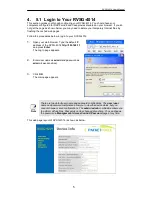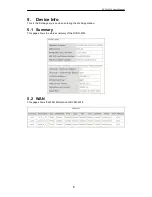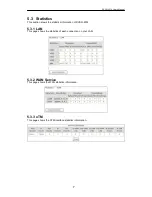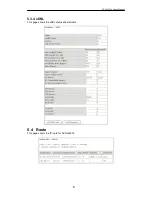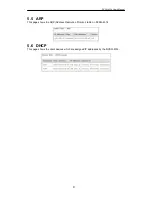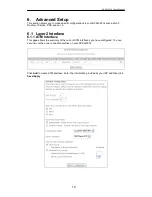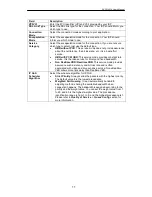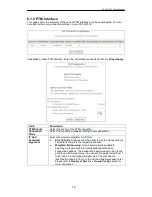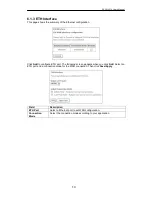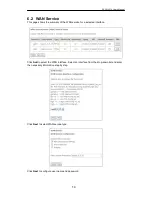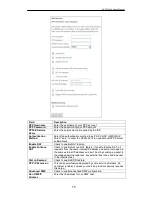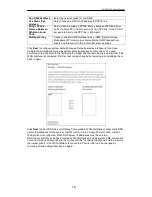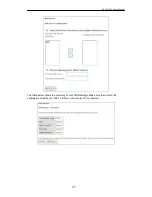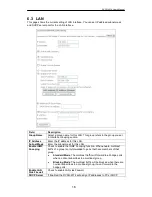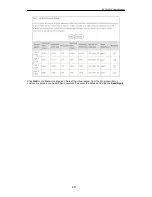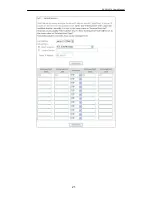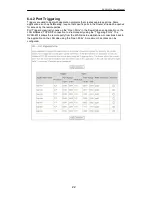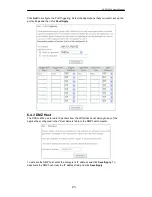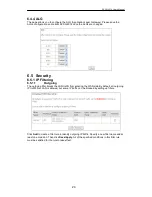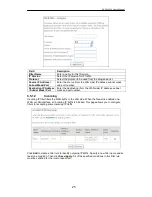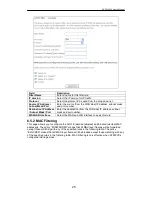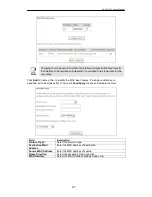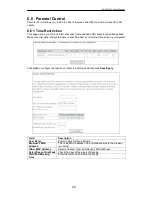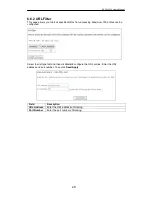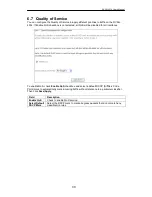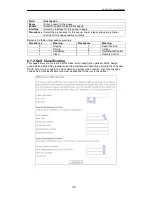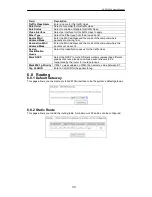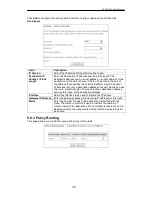
RVSG-4014 User’s Manual
19
clients) on your LAN when they start up. The default setting is Enabled.
Start/End IP
Address
Configure the DHCP range used by the DHCP server when assigning IP
Addresses to DHCP clients. This range also determines the number of
DHCP clients supported.
Leased Time
(hour)
Configure the amount of time the clients will be allowed to connect to
DHCP server. If set to 0, the allocated IP addresses will be effective
forever.
Enable DHCP
Server Relay
Check to enable DHCP server relay function. If DHCP Relay is selected,
the DHCP requests from local PCs are forward to the DHCP server that
runs on the WAN side. To have this function working properly, disable the
NAT to run on router mode only, disable the DHCP server on the LAN
port, and make sure the routing table has the correct routing entry.
DHCP Server
IP Address
Eenter the IP address for DHCP server.
Static IP
Leased Time
List
Click Add Entries to configure static LAN IP according to its MAC address
to the clients.
Configure the
Second IP
Address and
Subnet Mask
for LAN
Interface
Enter the second IP address and subnet mask for the LAN interface if
needed.
Automatically
Add Clients
with the
following
DHCP Vendor
IDs
Enter (add) support to automatically map LAN interfaces to PVC’s using
DHCP vendor ID (option 60). The local DHCP server will decline and
send the requests to a remote DHCP server by mapping the appropriate
LAN interface. This will be turned on when Interface Grouping is enabled.
6.4
NAT
6.4.1 Virtual Servers
You can configure the RVSG-4014 as a virtual server. Virtual Server allows you to direct
incoming traffic from WAN side (identified by Protocol and External port) to the internal server
with private IP address on the LAN side. The internal port is required only if the external port
needs to be converted to a different port number used by the server on the LAN side. A
maximum 32 entries can be configured.
Summary of Contents for RVSG-4014
Page 24: ...RVSG 4014 User s Manual 21 ...
Page 44: ...RVSG 4014 User s Manual 41 ...

